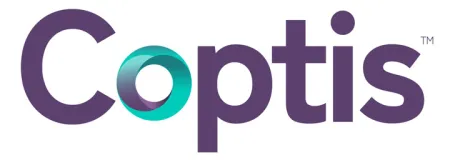Streamline your INCI list without compromising on results
From ‘skinimalism’ and the ‘clean girl’ aesthetic to Gen Z’s skincare overwhelm, time and time again cosmetics consumers are signaling their desire for pared-down, personalized routines, multifunctionally, and clear and simple marketing.
And this extends to the list of ingredients on products’ packaging – aka, the INCI list. Standing for the International Nomenclature of Cosmetic Ingredients list, the INCI catalogues a product’s ingredients by their correct names, listed in descending order of weight.

In line with the simplification trend, brands’ formulators can create products with shorter, more understandable INCI lists to build trust with consumers and promote a ‘cleaner’ product profile.
Many popular beauty names in 2025 have adopted minimalist recipes as part of their brand DNA. Both The Ordinary and Inkey – formerly known as The Inkey List – are known for their single-ingredient, or simple ingredient products. Indeed, Inkey’s freshly-launched ‘No BS’ campaign targets consumers’ overwhelm in the face of complicated skincare.
Paula’s Choice, which prioritizes high-quality ingredients and avoids potential irritants, Versed’s ‘quiet luxury’ approach to skin care and the Ten range from Typology, promising minimalist formulas with maximum results, are likewise championing a ‘less is more’ approach.
Making an effective minimalist formula
There are multiple strategies a formulator can adopt to reduce an INCI list in a cosmetic product. The number of unnecessary ingredients in a product can be cut by using multifunctional ingredients and consolidating similar chemicals to avoid unnecessary variations.
The goal is to have fewer, but more effective ingredients. This often requires a deep understanding of formulation and ingredient function to avoid simply removing effective components.
As well as trimming excess and supporting a ‘clean’, transparent positioning, a streamlined INCI can make formulations easier and cheaper to process.
Know your product
Formulators should start by knowing their product’s core goal – whether new or pre-existing. Focus on the end result when auditing a formula, keeping an eye out for overlapping ingredients which may be providing similar benefits or adding little value.
Remove or reduce ingredients
Critically evaluate the purpose of every ingredient in the formulation. If an ingredient does not contribute to the product’s efficacy, stability, or user experience, consider removing it. In some cases – provided you have identified a redundant ingredient via knockout experiments – you might be able to completely remove an ingredient from a product without anyone noticing a performance difference.
Use multifunctional ingredients
Certain ingredients can serve multiple purposes within a formula. Stability-boosting gums and polymers might also help sensory. Or consider a botanical extract with both antioxidant and soothing properties. Some fragrance materials in a formula can act as a preservative, while certain emulsifiers perform as stabilizers and thickeners.
In some cases, functional ingredients, like humectants, can help the delivery of actives, while there are active ingredients that tick multiple boxes in terms of their effect. A great example of this is Niacinamide, a ‘jack of all trades’ which regulates sebum production, reduces inflammation, and evens out skin tone.
Consolidate similar ingredients
Minimize the use of ingredients with similar functions, such as several emollients or humectants, by choosing one or two potent ones. And instead of using several different types of emulsifiers, for example, research and select one highly effective ingredient that fulfills the required functions.
How can PLM solutions help?
Whether you are approaching a minimalist formulation from scratch, or reassessing your existing line-up, PLM software from Coptis Software Solutions can help you every step of the way. For example:
Sourcing
Having worked out your strategy, you’ll know what ingredients you want to omit… but also what ultra-efficacious and/or multifunctional raw materials you want to include in your formulation. Now you need to identify suppliers who can provide ingredients which meet your quality, cost and logistical requirements. At the same time, the choice of packaging must be adapted to your formulation (or reformulation), reflecting the product’s identity and complying with the required standards.
PLM supports this phase by integrating raw material and supplier databases. It allows the user to compare and manage alternative raw materials, perform cost simulations, and ensure that whatever you have selected meets your project’s regulatory and environmental constraints.
Formulation
Your streamlined formulation will either be brand new or altered. But, with each tweak, does it still meet the requirements defined by the marketing brief? And, crucially, does it comply with regulatory constraints? This process may require constant adjustments to balance cost, product efficacy, and compatibility with trends.
Here, Coptis’ technology manages blacklisted substances (brands and retailers) while issuing regulatory alerts to instantly check whether the proposed formula is compliant with target markets. This reduces the risk of errors and speeds up the formulation process, eliminating the need for to-and-fro communication between the formulation and regulatory teams.
Compliance & validation
PLM software tracks and documents every test, guaranteeing complete traceability for users. It automatically generates regulatory documents including the PIF (Product Information File), INCI list and finished product formula, and marketing dossiers.
Before proceeding with product validation, teams can see straight away whether all criteria have been met. PLM also ensures that all documents are up-to-date and compliant before the official launch of your trending, minimalist finished cosmetic product.
Coptis is the leading software publisher for cosmetic laboratories, boasting 26 years’ experience supporting professionals in the industry with solutions tailored to their specific needs. The team is continually updating Coptis’ software to meet industry requirements, helping manufacturers navigate regulatory red tape while creating market-defining finished beauty goods.
To find out more about Coptis PLM and what it can do for you, contact our teams or request a demo.





